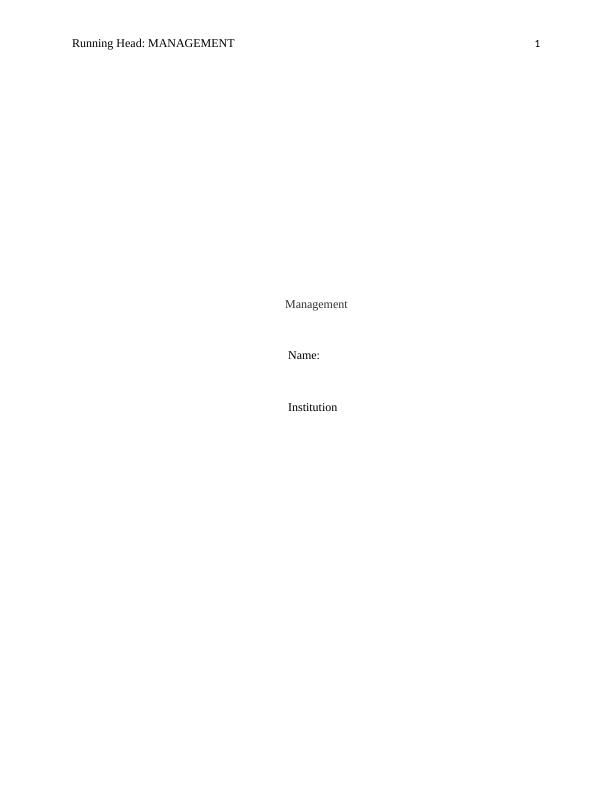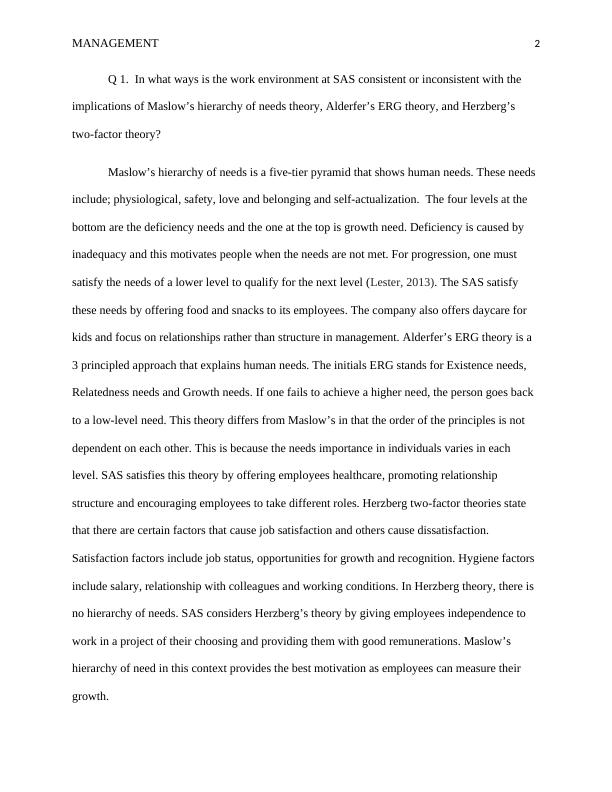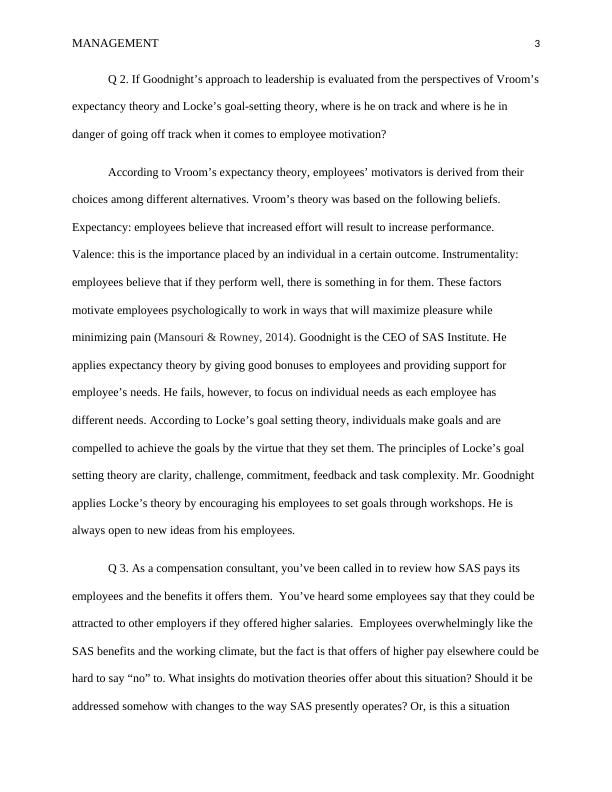Management .
In this assignment, the student is required to analyze the work environment at SAS in relation to Maslow's hierarchy of needs theory, Alderfer's ERG theory, and Herzberg's two-factor theory. The student is also asked to evaluate Goodnight's leadership approach using Vroom's expectancy theory and Locke's goal-setting theory.
Added on 2023-05-29
About This Document
This text explores the work environment at SAS and its consistency with Maslow’s hierarchy of needs theory, Alderfer’s ERG theory, and Herzberg’s two-factor theory. It evaluates Goodnight’s approach to leadership from the perspectives of Vroom’s expectancy theory and Locke’s goal-setting theory. It also reviews how SAS pays its employees and the benefits it offers them. The text provides insights from motivation theories about the situation and gives an update on the latest news about SAS.
Management .
In this assignment, the student is required to analyze the work environment at SAS in relation to Maslow's hierarchy of needs theory, Alderfer's ERG theory, and Herzberg's two-factor theory. The student is also asked to evaluate Goodnight's leadership approach using Vroom's expectancy theory and Locke's goal-setting theory.
Added on 2023-05-29
End of preview
Want to access all the pages? Upload your documents or become a member.



